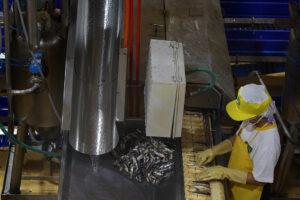




Quarterly Economic Growth Release: More BSP cuts to come
 DOWNLOAD
DOWNLOAD

Monthly Economic Update: Fed catches up
 DOWNLOAD
DOWNLOAD

Inflation Update: Steady and mellow
 DOWNLOAD
DOWNLOAD


Manufacturing expands at fastest clip in 5 months

Philippine manufacturing activity in April expanded at its fastest pace in five months amid an increase in output and new orders, S&P Global said on Thursday.
The S&P Global Philippines Manufacturing Purchasing Managers’ Index (PMI) rose to 52.2 in April from 50.9 in March, marking the strongest improvement in five months or since the 52.7 reading in November 2023.
A PMI reading above 50 means improved operating conditions from the previous month, while a reading below 50 shows deterioration.
 The Philippines’ PMI reading remained the second fastest among six Association of Southeast Asian Nations (ASEAN) member countries in April, just behind Indonesia (52.9) and ahead of Vietnam (50.3).
The Philippines’ PMI reading remained the second fastest among six Association of Southeast Asian Nations (ASEAN) member countries in April, just behind Indonesia (52.9) and ahead of Vietnam (50.3).
Myanmar (49.9), Malaysia (49), and Thailand (48.6) all saw a contraction in manufacturing activity in April.
The Philippines’ PMI reading was above the ASEAN average of 51.
“Building on growth seen in the first quarter of the year, the Filipino manufacturing sector showcased further gains in April,” Maryam Baluch, economist at S&P Global Market Intelligence said in the report. “A quicker rate of expansion was observed for new orders, which in turn triggered a renewed and solid rise in production.”
According to S&P Global, new orders in April increased at the fastest pace since November 2023.
“Export market conditions also improved in April, with new export orders rising for the third month running and at the quickest pace in five months,” it said.
S&P Global said the rate of growth in goods production was “solid” and the “most pronounced” in four months
“With production requirements rising, hiring and purchasing activity remained in growth territory. Moreover, stockbuilding became more widespread in anticipation of greater future output,” Ms. Baluch said.
Manufacturers ramped up purchasing in April, the fastest pace in nine months, due to improved demand and increased production requirements.
“Stronger rates of stockpiling were also recorded at Filipino manufacturing firms, with pre- and post-production stocks accumulated at fastest paces in 12 and 17 months,” it said.
S&P Global noted that manufacturing jobs increased for a third month in a row in April, although easing from March.
“However, the accelerated growth in new orders meant that pressure on capacity had intensified, with some firms struggling to complete work in hand. As a result, the latest rate of backlog depletion was marginal overall and the weakest since August 2023,” it said.
S&P noted that a slower-than-average increase in cost burden meant most manufacturers kept their charges unchanged month on month.
“Prices data indicated a relatively subdued inflationary environment, which also is likely to help support growth in the coming months as firms were able to price more competitively,” Ms. Baluch said.
A BusinessWorld poll of 16 analysts showed inflation may have accelerated to 4.1% in April from 3.7% in March.
Manufacturers were “largely positive” in the next 12 months, with around a quarter saying there will be growth in production. However, the degree of confidence dropped to a four-year low, S&P Global said.
The PMI measures a country’s manufacturing conditions based on the weighted average of five indices: new orders (30%), output (25%), employment (20%), suppliers’ delivery times (15%) and stocks of purchases (10%).
“(PMI) seems to have been unaffected by inflation, with cost of production as measured by the Producer Price Index for manufacturing, having fallen by 1% year on year in March, marking the third consecutive month of decline, although it saw a slight month-on-month increase of 0.3%,” Security Bank Corp. Chief Economist Robert Dan J. Roces said in a Viber message.
If the PMI reading continues to improve, Mr. Roces said he expects an upside to gross domestic product growth.
Bank of the Philippine Islands Lead Economist Emilio S. Neri, Jr. said stronger demand in the electronics and food processing sectors contributed to the uptick in factory activity.
“S&P’s survey is consistent with the recovery in Asian electronics exports, which happens to be one of the major manufacturing subsectors in the Philippines,” he said in a Viber message.
“It is also possible that the local food processing industry, despite higher input costs, continues to thrive given the strength of overall domestic demand, driven largely by favorable demographics and declining unemployment rates,” he added.
Oikonomia Advisory & Research, Inc. President and Chief Economist John Paolo R. Rivera said in a Viber chat that slower inflation may have helped boost factory activity in April.
Rizal Commercial Banking Corp. Chief Economist Michael L. Ricafort said the uptick in factory activity may have been due to the higher number of working days in April versus March.
“This is a sign of resilience despite and defying the still relatively higher interest rates that increased financing costs/borrowing costs for manufacturers since 2022 due to higher prices/inflation,” Mr. Ricafort said in an e-mail. — By Beatriz Marie D. Cruz, Reporter
This article originally appeared on bworldonline.com





 By BusinessWorld
By BusinessWorld